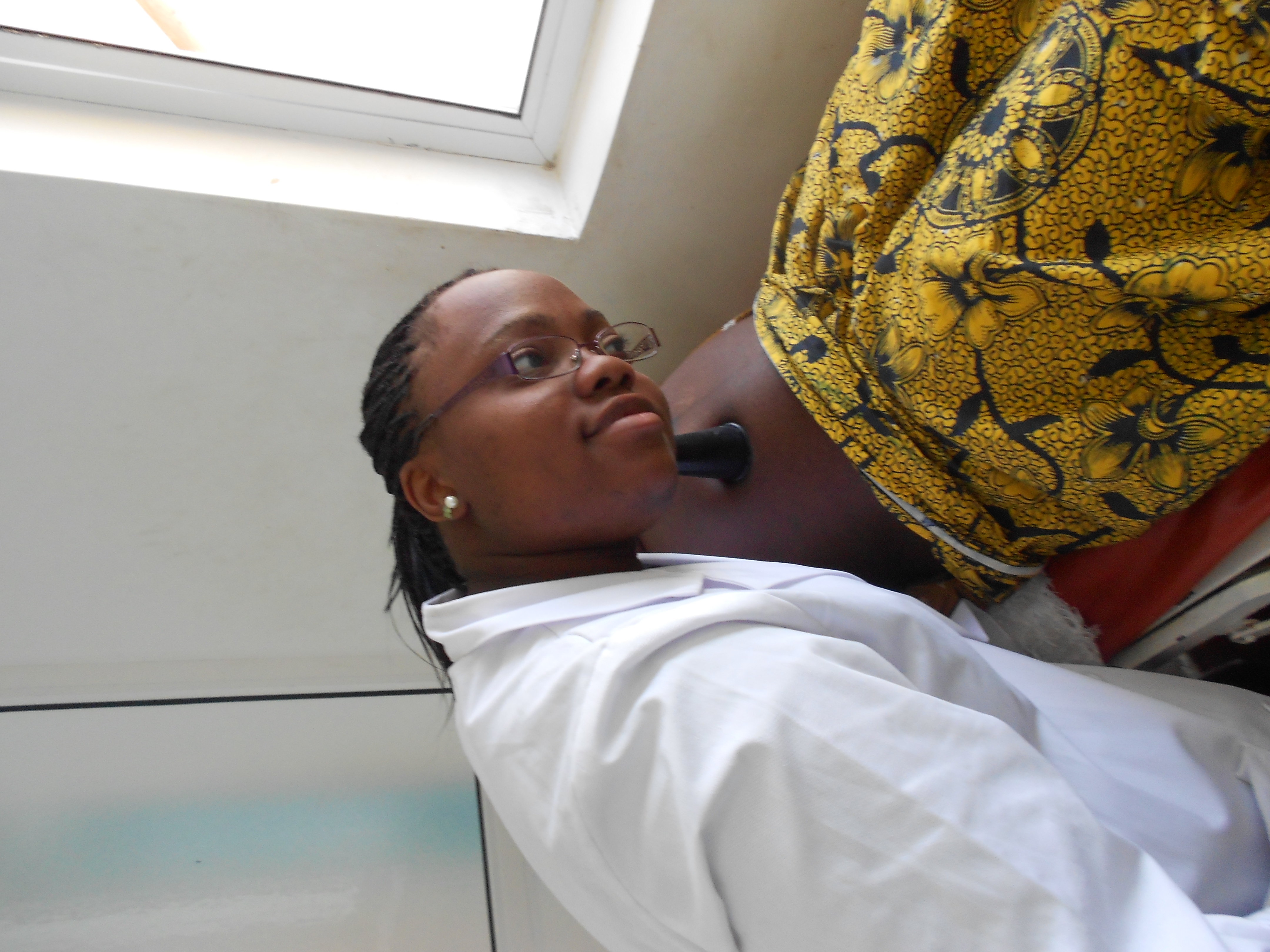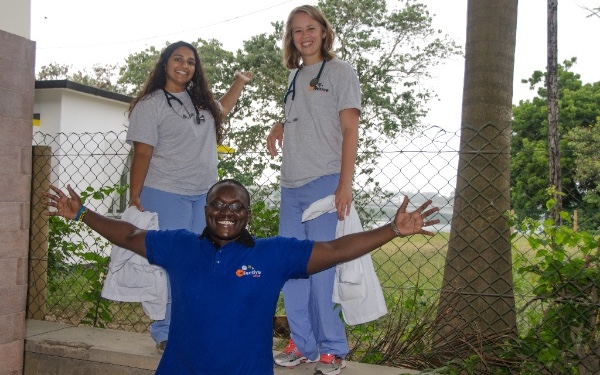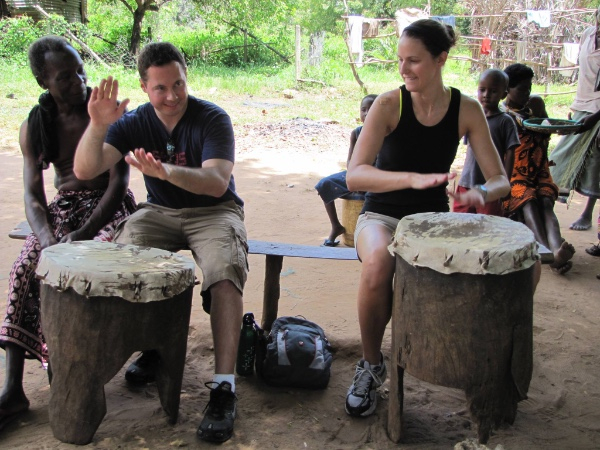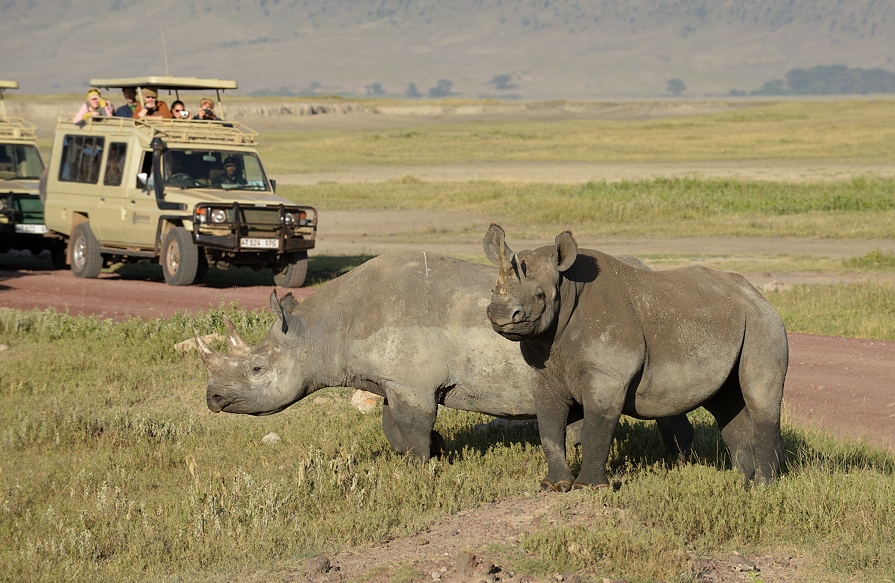 Visit Elective Africa website Visit Elective Africa website
|


|
|
|
| Elective Africa Monthly Newsletter |
 |
|
Did you know that eggs have been a symbol of spring since ancient times, also a symbol of rebirth of the earth in pre-christian celebrations of spring? Well it is the Easter season again and guaranteed there will be lots of egg hunting. As we bring to you our fourth newsletter for 2017, here's a recap of the key discussions. Kenya has shown encouraging improvements in reproductive and child health outcomes over the period 2003-2014. Read more on the improvements in maternal health in this region. This being the month of mental health focus, we have touched on this topic that is so sensitive..... If you have been on program with us, then most likely you have met or heard from our ever smiling Program Coordinator, Phares Odhiambo. Phares is in his 7th year in EA, thats right! He's shared with us candid stories of the connections and experiences he's had while working here. There is just something elemental with this town and it is a must read. When the time comes choose life. choose travel. choose to explore the exciting destinations. Do you have a healthcare topic of interest? Talk to us to guest write for our readers and let us share together. Back to top |
| Maternal Health in Kenya and Tanzania |
 |
|
Every day, approximately 830 women die from preventable causes related to pregnancy and childbirth. 99% of all maternal deaths occur in developing countries according to a report by WHO Nov, 2016. The report further noted that it was estimated that in 2015, roughly 303 000 women died during and following pregnancy and childbirth. Almost all of these deaths occurred in low-resource settings, and most could have been prevented. There is no doubt that there is an increase in the number of medical, nursing and midwifery students to undertaking elective rotations in an overseas hospital especially in developing countries. Healthcare placements in obstetrics and gynecology speciality allows medical, nursing and midwifery students to learn more about these women health issues, thus complimenting their theoretical training in a global context. Countries such as Kenya has shown encouraging improvements in reproductive and child health outcomes over the period 2003-2014. The Kenya Demographic Health Survey (KDHS) 2014 shows a decrease in the infant mortality rate from 52 to 39 per 1,000 live births, and a decrease in the under-five mortality rate from 74 to 52 per 1,000 live births between 2008 and 2014. These declines have been mainly driven by enhanced use of mosquito nets, increase in antenatal care, skilled attendance at childbirth, postnatal care, contraceptive use, exclusive breastfeeding practices and a decrease in unmet family planning (FP) needs, as well as overall improvements in other social indicators such as education and access to water. The Government of Kenya launched a Maternal and Newborn Health (MNH) Road Map in August 2010 whose goal is to accelerate the reduction of maternal and newborn morbidity and mortality towards the achievement of the Millennium Development Goals (GoK). Most maternal deaths are due to causes directly related to pregnancy and childbirth, unsafe abortion and obstetric complications such as severe bleeding, infection, hypertensive disorders, and obstructed labor. To ensure all expectant mothers are safe and get quality healthcare services:
These efforts have seen more women in rural areas receive skilled assistance during delivery, availability of more medical equipment such as ultra sound machines, reallocation of more skilled workers to lower level hospitals thus reducing long-standing disparities between urban and rural areas. In January 2014, Beyond Zero Foundation was formed in partnership with the government to help reduce maternal and child mortality. This followed the introduction of mobile clinics spearheaded by The First Lady of Kenya, Margaret Kenyatta. This initiative has received support from both the Ministry of Health and other corporate organizations and has since inception realized great success in improving accessibility of the maternal health services especially to the rural populations. Tanzania has also experienced an increase in partnership with different organizations, NGOs and the government on improving maternal and child health. The advances in Maternal Newborn and Child Health (MNCH) that have occurred are the result of initiatives conducted by the government with bodies such as; Family Care International funded by the Bill & Melinda Gates Foundation launched the Skilled Care Initiative in Tanzania to ensure that high quality skilled care is available to pregnant women, UNICEF, Save the Children and Engender Health that focuses on family planning and Prevention Mother-to-Child transmission (PMTCT). They also respond to needs through counseling and outreach programs which are meant to impact on the health and wellbeing of the mother during the expectancy stage, prenatal and post natal stage and thus improve the health of the child. Popular Obstetrics and Gynaecology Elective Placements
|
| Celebrating our Program Coordinator - Phares Odhiambo |
 |
|
Meet our cool ever smiling Mombasa program co-ordinator Phares Odhiambo. Being in his 7th year now with EA, he's always enthusiastic to ensure everything needed for your placement is ready before your arrival and happily discusses your new cultural experiences and addresses any issues on ground. Plus a great guy to make friends with. Tell us more about you as an individual I am a down to earth, sociable and very perceptive person. I was born and raised in Mombasa but I have also lived in Kampala, Uganda for around 7 years during my college days. One of the things I hold dearly in this life is family and true to Princess Diana’s words, “Family is the most important thing in the world”. This is because I believe family gives one a purpose for life. Lets talk about your demeanor. How do you maintain such sobriety even under pressure? I always put God first in all that I do. He has always given me the strength to manoeuvre through challenging times. I also believe that such kind of pressure is what confirms to us that we are sane :) So you went to school in Uganda, tell us more about your stay in Kampala I really had a great time in Kampala. Life there is totally different from Kenya, the food is so different yet very nice especially “rolex” (an omelet rolled in a nan kind of bread called chapatti with tomatoes onions and green capsicum). I totally understand if you are salivating right now. Kampala is a place I reminisce about and we have been looking into ways to set up a program there. We currently have partnership with the Butabika Mental Health Referral facility for psychiatry elective students. Watch out for news about this destination this year. What has been your experience handling participants from diverse backgrounds? We are lucky to continue hosting diverse groups of students from Europe especially UK, Poland, Sweden, US and Canada among other countries. Some of my memorable experiences is dealing with the diversity of our clients is sometimes the risk these kids will take. One incident i remember is a hot afternoon am checking on them. What meet my eyes is a do or dare kind of game. They are jumping into the pool from the roof! I was mortified at the risk they were putting themselves into & had to put an immediate stop to it. But guess what no matter how many rules you have, you will always get a diverse group especially over summer & the idea is to keep them engaged, share the activities they can engage in. Would you say you've had a strict schedule with the students on a day to day? We work on flexible schedules as we believe everyone who comes on program has already set their trip objectives. We then provide support to these objectives so that they can achieve them, and this goes beyond the hospital. For example we have had students who like to stay in the hospital all day, but in Mombasa, most clients I have had, do their hours and go enjoy the beach. Can you imagine traveling when its winter in your home country & you go back with no beach stories back home? That would be sad. Mombasa is a beautiful place that one should enjoy so I encourage them to discover, experience even as they come to learn. Arusha is the same, there are lots of activities one can engage in including the local crafts for souvenirs, volunteering for those who choose to add more experience to their CV among other activities. You have been with EA for 6 years now? How has that been for you? I have had lots of great experiences that anyone would wish for and also made friends. Some of these connections have gone on for years. I am saddened by the recent demise of one of our participant she was a dear friend who came on program for 8 weeks and she was the only participant on program. She was pretty adventurous that she went on to Climb Mt. Kilimanjaro in Tanzania even though she had her placement in Mombasa, Kenya. She blended well with the community and we will truly miss her. Our condolences and may her soul rest in peace. Amen. What of group experiences? Isn't it hard managing group dynamics? You can say that again, but then you can tell they tend to have the best experiences because they pool together to do things. Among the ones I cant forget, in my first year with EA, I had a group of medical students studying at the Jagiellonian University in Poland who came as 3 couple and we become very good friends. They were very adventurous and at times I would join them in some of their adventures. And in one of those adventures we went on a deep sea fishing expedition and after 4 hours in the ocean we didn't catch anything except for the seasickness that made all of us vomit. I organized cultural integration trips for them like dancing with the local community while drinking a local brew of palm wine. These are some of the activities that makes ones trip memorable outside of the hospital rotations. They managed to assist in minor surgeries as they were all senior medical students and I was amazed how they would dissect and suture back a mango when they are back at the residence to sharpen their suturing skills :) They also donated chairs, mobile curtains in the labour ward, bedsheets and lots of other items to the Coast Provincial General Hospital. I always encourage students to always try and travel in groups which makes the experience more fun!!! The University of Drexel group also comes to mind because one of the students came back on program as a new doctor. We did an excursion with all 6 to Malindi, visiting historical sites and snorkeling. So did you ever envision working in travel and medical field? I can tell you, this came as a surprise. In fact, to date I still struggle to understand some terms but it’s so much better. I have had to learn the medical terms well. The little that I understand is enough to be able to know whether our clients are getting value from their placement. What comes in handy for me though, is the relationships we have built with doctors. As you might have already known Kenya had a doctor's strike that lasted for 100 days and this really affected the public hospitals. We had clients coming during the same period to Mombasa and Migori and we had to seek for alternative hospitals. We have established good relationships with hospital administrations such that we place students in private or not-for -profit hospitals. Like in Mombasa, we took participants to Bomu hospital, a private not for profit hospital whereas in Migori our participants went to St. Joseph Mission Hospital, a catholic mission hospital. Building these relationships is important. When our students need documents to be signed or attachments of professional papers, we go back to these supervisors for assistance. We are keen to ensure that we appreciate their input and so we do give them a token of appreciation for all our supervised clients. You have spoken alot about the program, what do you do during your spare time? I spend most of my time with family, watching movies and documentaries especially of African political leaders. My best compilation being that of Mobutu Sese Seko. How he rose to power and his over 30 years reign at the Democratic Republic of Congo (Zaire). I also love catching up with friends and volunteering in community projects whenever I can like helping out in a children’s home. Book your spot today for a Healthcare Placement Abroad Back to top |
| See what clients say about us: Dr. Bryanne Robson |
 |
|
When I decided to go to Mombasa, Kenya with Elective Africa, I had three years of medical training under my belt – one of which was clinical work. I was excited by the possibility of experiencing a culture much different from my own, and being able to provide care to patients in a limited resource environment. Culture shock is something you cannot prepare for, but must simply embrace and enjoy the experience. I don’t specifically remember why I chose Mombasa, but I can tell you it was a good choice. Mombasa is a busy, friendly, exciting and beautiful city. There are beautiful beaches to explore. There are a number of restaurants and shops to see. The people of Mombasa are hardworking and welcoming. The Coast Provincial General Hospital is the second largest hospital in Kenya. They provide all services and see a large number of patients. This allowed my peers and me to have a vast and rewarding experience. We were able to participate in the OB/GYN Department, assist with vaginal deliveries, cesarean sections and miscarriage management. We were also involved in the Emergency Department and Minor Theatre Surgical Department. Here is where we could triage and treat a variety of pathology. We were involved in a number of minor surgical procedures and many post-traumatic suturing. The staff at CPGH welcomed us and readily involved us in the care of the patients. For a developing country healthcare system, it’s beneficial if you can bring a lot of supplies to the clinical setting where you will be rotating. We collected donations of gloves, sutures, surgical masks, tools, etc. We also had a fundraiser before we left, to raise money for donations while in Kenya. We donated some to the orphanage we visited, some to the hospital, and purchased an air conditioner for the Minor Theatre operating suite. The hospital is very different from most westernized facilities. There is no hand sanitizer outside every patient’s room. There are no patient rooms but wards with beds aligned against the wall. The windows and doors are open to the outside. There is no endless supply of equipment. Most things are reusable and not disposable. While preparing for travel you’ll need: a checkup – you’ll need certain shots and prophylactic medications; approval from your school; a passport and a visa; a mosquito net for your bed, bug spray, sun block; all other general travel stuff. Most importantly, be prepared to feel unprepared. You’ll frequently find yourself in situations you haven’t experienced before, and it is essential to remain calm, apply all of the years of training, collaborate with others and work your way through. This is a unique experience that will forever change your life, your perspective of medicine and the way you practice medicine in the future.
Dr. Bryanne Robson Philadelphia, PA, United States Back to top |
| Addressing the Rising Disease Burden of Depression |
 |
|
Depression is the leading cause of ill health and disability worldwide. According to the latest estimates from WHO, more than 300 million people are now living with depression, an increase of more than 18% between 2005 and 2015. Lack of support for people with mental disorders, coupled with a fear of stigma, prevent many from accessing the treatment they need to live healthy, productive lives. The World Health Day approaching on April 7th, is focussed on depression and form the launch of a one year campaign on depression themed “Depression: let’s talk”. A report titled 'Depression and Other Common Mental Disorders, Global Health Estimates' by the World Health Organisation (WHO) states that by the end of 2016, at least 1.9 million Kenyans were suffering from depression, an 18 percent increase from 2005. WHO Depression Fact File
Common Signs of Depression With depression rising to become a very key contributor to the global disease burden, the following are the red flags to the healthcare providers and individuals to look out for in early detection of depression as identified by WHO and YALE global health review.
Prevention of Depression According to World health report 2001, there are three main levels of addressing depression which are the primary level, the secondary level and the tertiary level. Primary Level In this level the health system seeks to perform community outreach and health promotion activities aimed at increasing the community awareness on health. Targeting of the interventions to reducing the risk factors to depression is a sure way of reducing the incidence of depression among the populations according to the institute of work health. Addressing the social determinants of health through health education and promotion is key to minimizing the risk factors to depression. Secondary Level The secondary level depression prevention targets people who have conditioned earmarked as key risk factors to depression. This level is where the health system has such interventions as screening to patients with chronic illnesses Diabetes, Cancer and other chronic illnesses have been shown to be conditions that predispose individuals to depression. Tertiary Prevention The tertiary prevention level is aimed for adherence to medication. This includes giving support and encouragement to a patient to continue taking antidepressants for at least six months after successful treatment for an episode of depression to reduce the risk of relapse. This level of depression is essential to ensuring a successful episode of healing for depression. While depression comes in various forms and ways, its critical to remember that it has a cure and if detected one should seek professional care. Kenya has only 88 psychiatrists and 427 nurses qualified to handle the illnesses in the 14 mental health hospitals. Specialists have called on the government to train more experts and increase the number of hospitals dedicated to the illnesses. During launch of the country’s first mental health policy, the deputy head of the mental health unit, Dr Catherine Syengo said that many Kenyans viewed mental illness as a spiritual problem rather than a medical one. Further they turn to religious leaders or traditional healers for treatment as opposed to seeking treatment from specialists. The policy recommends that governments hire more mental health specialists and community health workers. Back to top |
| Something Elemental about Arusha |
 |
|
Snuggled in a wide expanse of fertile volcanic land, Arusha town is located at the foothill of Mt. Meru and is a gateway to Africa’s highest Mountain, Mt. Kilimanjaro. At a glance, Arusha town is not a charmer, mainly because it is a hive of activities as it is considered a stopover in the heart of Tanzania’s safari industry due to its fascinating surroundings and varied national parks. Arusha’s main economic activity is agriculture; seconded by tourism. Despite the many opportunities the town offers, one cannot help but fall in love with Arusha’s real beauty. Arusha is a global tourist destination and center to the Northern Tanzania Tourist circuit offering one a chance to unwind from one’s hectic daily activities: be it a weekend plan or an exclusive tour for a game safari in Africa coupled with the vibrant night life for those party rockers. If you are those people whom adventure makes you feel alive, while in Arusha exciting expeditions include:
Mount Kilimanjaro has a breath taking site and the highest Mountain in Africa. Climbing this Mountain is a not to miss activity while in Africa and of course we all know that travelling with a friend creates the best memories together. A Kilimanjaro climb is a once-in-a-lifetime adventure, so choose the best people to get you there! whether you wish to climb Kilimanjaro for charity or just for fun, we'll help you get to the top! For adrenaline lovers Elective Africa will help you get it flowing by climbing Mt. Kilimanjaro http://electiveafrica.com/safaris/kilimanjaro Arusha National park on Mount Meru - Located in Arusha town, Arusha National Park covers an area of 137 Square Kilometers. It is a gem of varied eco systems and a spectacular view of Mount Meru. It is home to variety of wild animals including the Lion, buffalo, Elephant, Giraffe, Bush bucks and Warthogs amongst others. Serengeti National Park - Found in Northern Tanzania, Serengeti National park is known is home to the greatest spectacle on earth, the massive annual Wildebeest and zebra migration. It is one of Tanzania’s premier attraction and a visit to it is just one thing you would want to do in a life time. The vegetation here is mainly grassland and woodland making it a great habitat for many wild animals including the big five and also easier to spot wild animals from far. The park is worldwide known for its incredible scenery and magnificent wildlife. Some of the most popular animals among tourists include: The Maasai Lion, Bush Elephant. African Leopard, Black Rhinoceros and the Buffalo amongst other. Variety of bird species are also found in this region. Tarangire National Park - Covering an area of 2600 square kilometers, Tarangire National Park is located South East of Lake Manyara on the Tarangire River. It a diverse and picturesque African Wildlife Sanctuary. It is the sheer vast number of baobabs that first capture the eye as you enter Tarangire National Park. The gently rolling countryside is dotted with these majestic trees, which seem to dwarf the animals that feed beneath them. The Park is a home to three rare African species: Generux and Fringe – eared Oryx. Lake Manyara National Park - Located along the road that leads to Ngorongoro and to Serengeti, Lake Manyara is one of the park with the highest bio-diversity of Tanzania. While the scenic beauty of this park certainly makes it worth a visit, Famous for its tree-climbing lions, flamingos, breathtaking scenery and the soda-ash lake in the center. The Lake takes a larger part of the park, though it does not have larger concentrations of wildlife, there are a number of unique species that give one a reason enough to take a safari here. Its famous attractions are the tree climbing Lions of Lake Manyara, the reason as to these is yet to be known but you would imagine of how a breath taking view it would be, watching this carnivores resting on top of an acacia tree. Ngorongoro conservation Area - The Ngorongoro conservancy is a must visit and one of the top most things to do for anyone visiting Tanzania. Covering 8292 square kilometers. Ngorongoro conservation is the only place on earth where mankind and wild animals co-exist together in Harmony, it encompasses three spectacular Volcanic craters and the Olduvai gorge. Among the three craters is the Ngorongoro crater, a world heritage site. Ngorongoro Crater - Found within the Ngorongoro conservancy, this breath taking natural wonder is the world’s largest intact caldera sheltering one of the most beautiful wildlife havens on earth with high game conservation on the crater floor. The conservancy was set up to protect the African wildlife which is endangered due to poaching and human wildlife conflict. Right now, wildlife co-exists side by side with the semi-nomadic Maasai pastoralists. Amazing, isn’t it? It is one of Africa’s premier attractions and a United Nations Educational, Scientific and Cultural Organization (UNESCO) world heritage site. Lions, Elephants, hippos, rhinos and giraffes can be seen roaming freely, birds on the fresh water lakes and pink beautiful flamingoes on the central Soda Lake. While in Tanzania, this is a must adventure on your to do list. Don’t just read about it, experience it. Surrounding the caldera are also comfortable resorts and hotels to make your trip very relaxing and comfortable while indulging in Tanzanian cuisine, which is a blend of dishes from various parts of the town as well as global culinary tradition. For more information on this safari and others offered by Elective Africa, contact us. Back to top |
|
|

 4 2017
4 2017